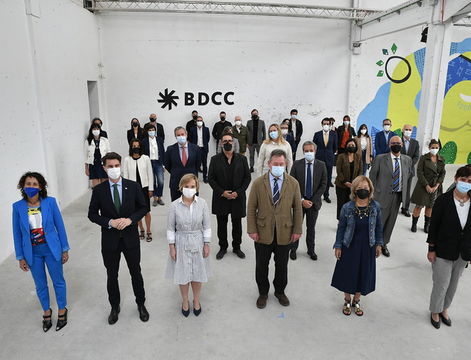
BDCC- Basque District of Culture and Creativity
Yesterday, July 8, the "BDCC- Basque District of Culture and Creativity" was presented in Bilbao. The objective is to help professionalize the management and i
CREADIS3 addresses the issue of innovation driving territorial development through non-technological forms of innovation. To tackle economic, social and environmental challenges, innovation is needed, not only based on the technological sectors but in allying these sectors to culture-based creativity.
The main objective of CREADIS3 is to align territorial public policy agendas to support the development of more efficient CCI policies in territories aiming to generate innovation and economic development in European regions. It is declined in 6 sub-objectives along 2 priority themes: Improving institutional governance and Boosting CCIs contribution to regional development.
€1,462,706.00
Research and innovation
CREADIS3 will produce an integrated report on Good Practices on Governance and creative Ecosystems, organise 6 study visits and 1 B2B event, deliver 6 Action Plans tailored for partners’ territories and respective policy instruments addressed, a Policy Toolkit and an international conference.
These outputs will support the establishment of sustainable Smart Specialisation Creative Districts with the following characteristics:
The aim of the Basque Country ERDF OP 2014-2020 is to boost sustainable economic growth by creating quality jobs and improve the competitiveness of the regional economy through 'smart' and innovative initiatives. Of the Programme 6 main priorities, the project addresses Priority 1/OT1: Strengthening research, technological development and innovation. The investment (€452.6 million worth of private investment expected to match public support to innovation or R&D projects) is targeted at enhancing research and innovation infrastructure and capacities as well as developing of links and synergies with enterprises, research centres, and high education, in line with the Basque Regional Innovation Strategy (RIS3) (44,60%).
There is a need to provide this policy with a strategic and a territorial approach and cross collaboration between ICCs, innovation and research centres in order to foster the relationships and collaboration among the businesses, creators and stakeholders of the “European Creative Sectors”. The Basque Regional Innovation Strategy (RIS3) and the Basque Country Research and Innovation Strategy/PCTI already detected the CCIs and the culture and the creativity as niches of opportunity.
The Operational Fund should include further the CCIs in its priorities at the same level as other industries which have already received larger support from ESIF.
The Regional Strategy 2040 is a strategic instrument directing the use of public funding (ESF, ERDF) in the region. It defines the most important development efforts in the region and is a combination of the desired long-term development objectives with necessary strategic choices and development strategies as well as the most important projects in terms of regional development. Chosen priorities are bio economy, digital economy and knowledge economy, but also well-being and tourism are included. Regional Strategy 2040 covers also the long-term development in land use planning. Local and national government authorities must take account of the council's plans and programmes in their own operations and other actions. On theoretical level creative industries perspective is included in all chosen priorities of the Regional Strategy 2040, but there is a need to valorize and specify in more concrete way how it can be incorporated and implemented in these priorities. There is a need to recognize and implement measures and activities to cross-fertilize creative industries and creative skills with main priority players of the strategy, to facilitate e.g. birth of completely new partnerships, new project ideas and/or new implementation modes
The policy instrument addresses the regional dimension and relates to SF Programme - Priority Axis 1: Research and Innovation, Action 1.1.2: Support to the provision of services for technology, strategic, organizational innovation for SMEs.
This measure aims at fostering innovation and diversification projects of SMEs by contributing to their external expenses for research, testing, measures, design, software, communication services and temporary management. For cultural and creative firms it gives the opportunity both for directly improving their competitiveness through innovation, and by providing creative services to the other firms;
- Priority Axis 1: Research and Innovation, Action 1.1.3: Economic valorization of innovation through innovative organizational solutions. This measure aims at promoting business networks among SMEs for developing together research projects or joint projects of service innovation.
This measure is crucial for cultural and creative firms because it can favour intersectoral collaboration for combining different technology and market competencies, for instance matching typical creative firms with ICT or engineering, or social firms. These instruments, already applied successfully to other sectors, thanks to the S3, are going to be used for the first time for CCIs. It is possible that the specificity of such industries will require some adjustment and dedicated criteria, that we will learn from the partners.
Priority or measure concerned :
Support to the installation of creative hubs in university city and/or city with more than 50 000 inhabitants.
Objective and Characteristics:
The rationale of this instrument is the promotion of innovation and creativity in a large audience (SMEs, researchers, students, artists) through the support of cross-sectoral innovations, start-up creations, technological dissemination in creative industries and the development of new business models. This was launched through the Creative Wallonia Program. It is meant to impulse at local level a new creative economy dynamics by fostering collaboration between CCI’s and “traditional” industries. The Government decided to create in 2014 7 Creative Hubs upon the territory with local partnerships (private and public, business and universities, institutions as well as small organisations). There was a need to implement at local level the Creative Wallonia program and the lessons learnt from the Walloon European Creative District project (cofinanced by EC between 2013 and 2015). The 7 Hubs are the territorial spine of Creative Wallonia aiming to support the key stakeholders of creative economy to structure themselves in an ecosystem with a common vision of the territory. The goal of each Creative hub is to boost in its territory the creative entrepreneurship and to convert the “traditional SME’s” to the creative economy. The idea behind this new policy instrument is to boost disruptive innovation.
The objective of PA3 is to achieve economic growth and employment in Slovakia through thematic objective no. 8 Promoting sustainable and quality employment and supporting labour mobility through promoting employment-friendly growth by developing endogenous potential as a component of territorial strategy for specific areas, including the conversion of declining industrial regions and strengthening the accessibility and development of specific natural and cultural resources . The endogenous potential of regions includes, inter alia, the creativity of human resources that, together with cultural resources, form a part of the creative economy. PA3 is designed into 2 support schemes: decentralised support scheme is to provide financial support to SMEs in CCIs and centralised support scheme is to nurture creative ecosystems in the regions by providing with infrastructure (creative hubs), innovation and business services. We especially need to address the centralised scheme and develop institutional models of collaboration when implementing support for regional creative ecosystems and also boosting innovation in CCIs both in terms of cross collaborations and internationalisation.
The policy instrument belongs to the 1st pillar of Region’s operational programme with a total budget aprrox. 70m.€. R&I has been identified as a key factor for Regions sustainable development and in this framework the policy instrument emphasizes in the diffusion and transfer of innovation from products and basic technologies to social innovation. The policy instrument aims at improving the regional R&D system by increasing research potential and private investments in research and development, promoting innovation and outturn of SMEs, particularly in sectors with a competitive advantage (agri-food, cultural and creative industries, tourism/culture, ICT).
The reasons why policy instruments should be improved are:
i) Western Greece aims at becoming an innovation pole for scientists, researchers and SMEs. In that framework support will be given to entrepreneurs, SMEs and clusters. CCIs in the Region must rely on strategic alliances, acquisitions, and networks to tap into the innovations of others
ii) The implementation of RIS3 strategy has highlighted the importance of diffusing innovation to SMEs in a more holistic approach, establishing links with research institutes and commerce organizations. The emerging digital innovating ecosystem in Western Greece plays a crucial role to this procedure as the main source of innovation for CCIs
iii) CCIs have a great importance in the European initiative SBA (Small Business Act for SMEs) recently adopted in Western Greece

Yesterday, July 8, the "BDCC- Basque District of Culture and Creativity" was presented in Bilbao. The objective is to help professionalize the management and i

Representatives of the Platform for Cultural and Creative Industries organized the first online conference on April 29, 2021, with 110 viewers. Following last y...
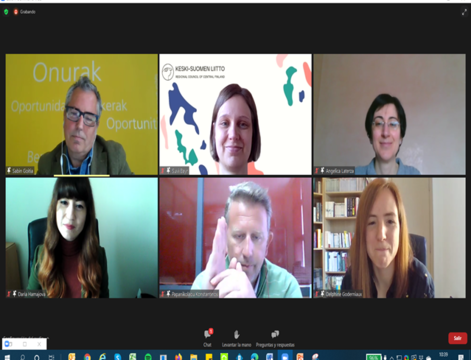
If you missed the CREADIS3 project final conference Towards more efficient cultural and creative policies based on Innovation and Diversity held last April...
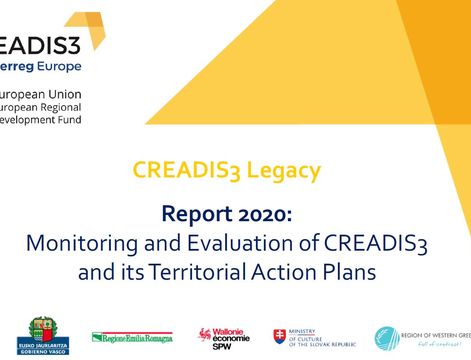
The CREADIS3 project has prepared a report with the results of the Monitoring and Evaluation of CREADIS3 and its Territorial Action Plans
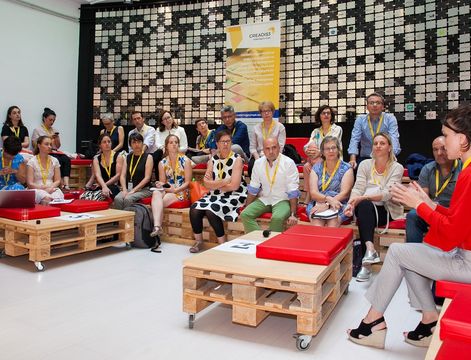
The CREADIS3 project final conference Towards more efficient cultural and creative policies based on Innovation and Diversity will be taking place on April 22nd

In the context of the actions dedicated to the mitigation of the Covid-19 crisis, the Interreg Europe Policy Learning Platform is organizing the online discussi...

In the framework of the European Week of Regions and Cities (EWRC), the side event Skills reform & partnerships for SMART CCI was held virtually, last 15th ...
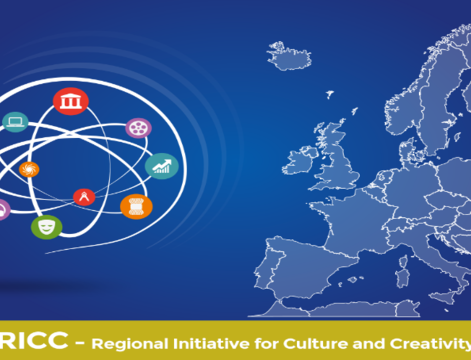
“The contribution of ESIF to address the Covid-19 emergency in the cultural and creative sectors” + Urban Agenda Partnership for Culture and Cultural Heritage
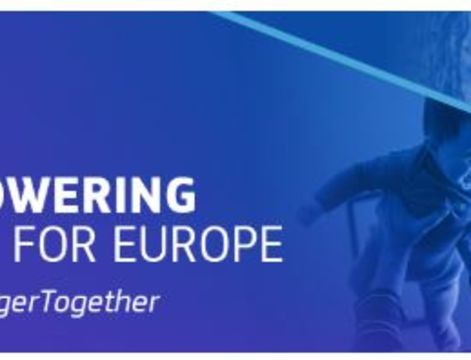
The European Commission has put forward an important recovery plan for Europe based on harnessing the whole potential of the EU budget to offset the social and ...
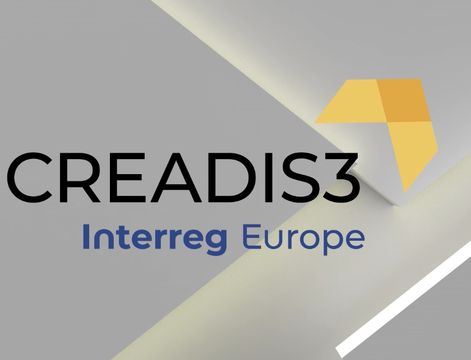
Here you can find a short video that summarizes the activities and achievements of CREADIS3 project during the PHASE I.